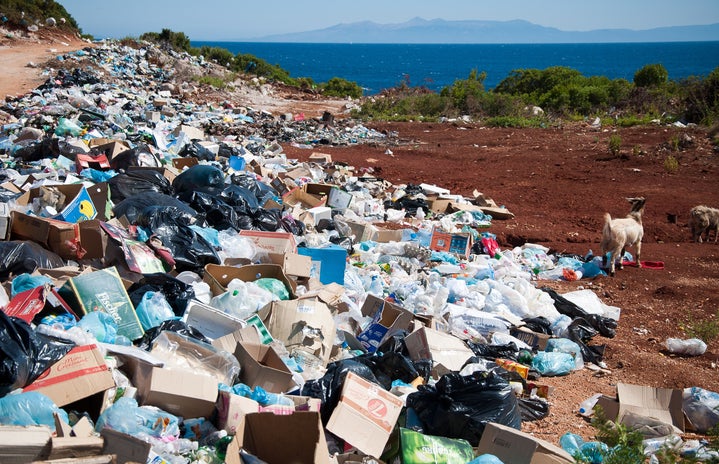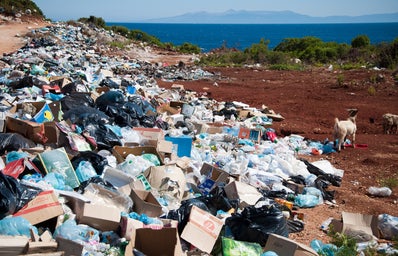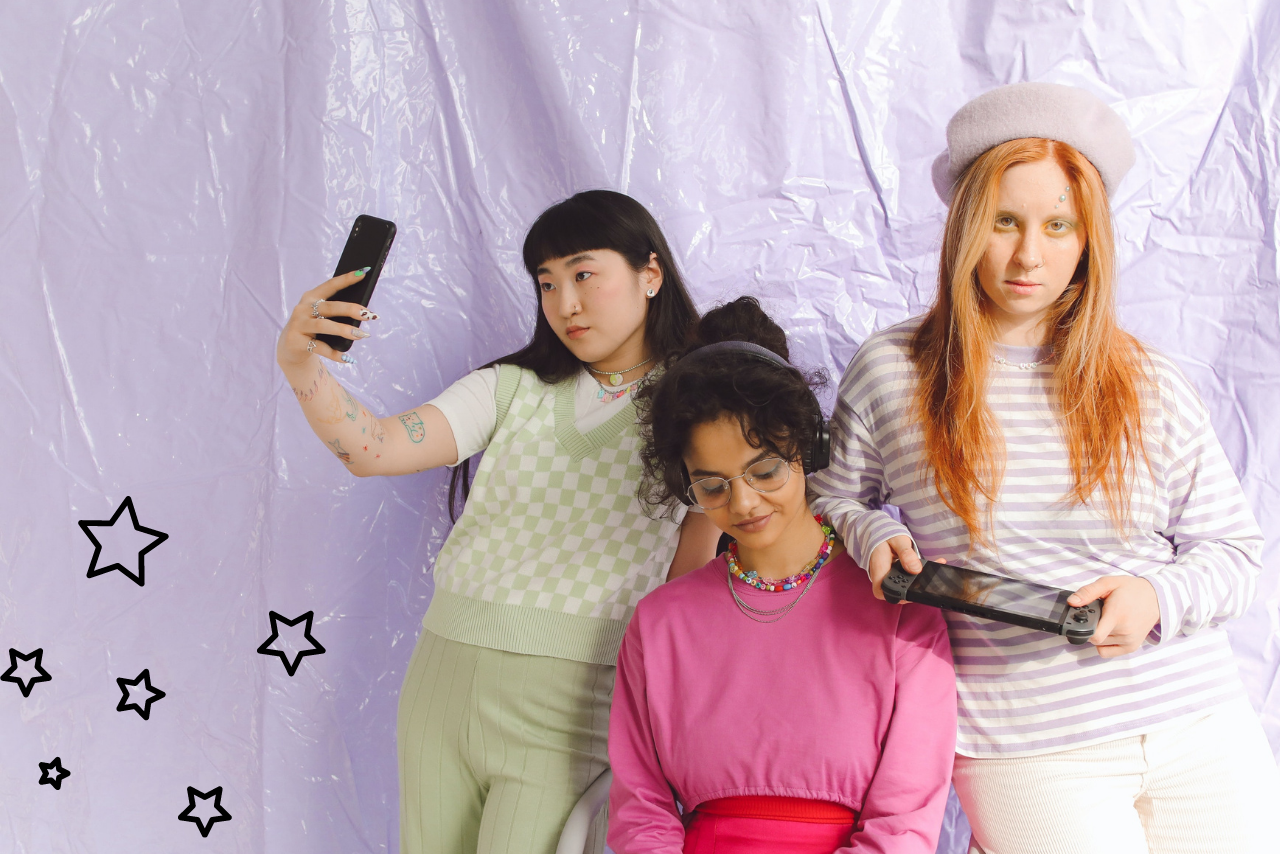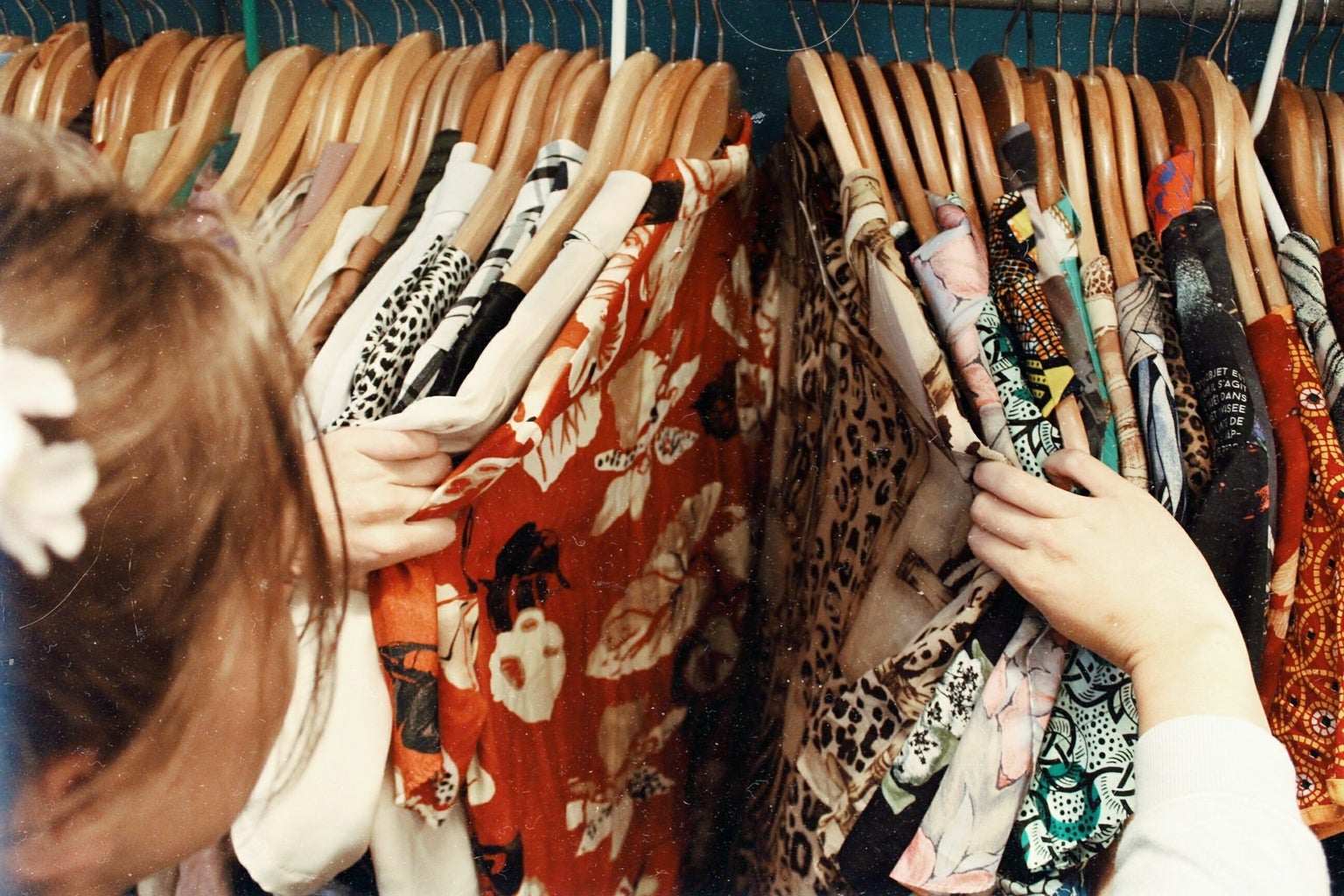Microtrends, as promoted on social media, are a detriment to our environment and must be stopped.
With the rise of influencer culture across all social media platforms—especially Instagram and TikTok—the emergence of “micro-fashion trends” has caused a serious disruption to the pace of the fashion cycle. Microtrends have gained mass popularity due to the promotion of certain trendy pieces or niche aesthetics by influencers and popular creators on social media sites. A microtrend can be described in the industry as fads. These are typically wardrobe pieces that move extremely quickly through the fashion cycle. A typical fashion cycle includes five stages: Introduction, Rise in Popularity, Decline in Popularity, and Rejection.
While scrolling through TikTok or Instagram you may have come across a knit dress with a lily pad-like print known as the Hockney Dress by House of Sunny. Its rise in popularity was due to a post made by Kendall Jenner on her Instagram account on July 28, 2020. Due to her cult following and mass influence over the purchasing power of Millennials and Gen Z women alike, this dress sped through the fashion cycle as no one has seen before.
Microtrends often follow a trickle-down structure, whereas in the case of a style icon—in this case, Kendall Jenner—promotes and wears a style that isn’t easily obtained by the mass lower-income public. There then becomes an increasing demand for the product in a more affordable and accessible fashion. This is where the high saturation of “dupes” comes into play.
Fast fashion brands such as Shein and Amazon can profit off these dupes that are created in a fraction of a time that they would have been even a decade ago. Within weeks of the Jenner post, both Shein and Amazon were selling duplicates for a fraction of the original $128 price. This causes the style to flood the market and disappear extremely quickly after reaching mass consumption, thereby causing the items to lose their original appeal.
Microtrends then speed up the fashion cycle as a whole because they shrink production and manufacturing times down to a fraction of what they once were. The “race to the bottom” mentality held by fashion producers becomes even more prevalent. In order to be the fastest in the industry, one must use damaging production techniques that include large amounts of fabric waste, use of cheap dyes that can be harmful to the local water supply, and increased use of water and chemicals to create cheap fabrics.
As fashion is the second largest polluting industry in the world, microtrends speeding up production and increasing environmental waste pose a serious concern for our ecological state.
For example, these Hockney dress dupes’ fabrication includes a majority of synthetic fibers. One of these fibers known as acrylic, a common wool alternative, is a petroleum-based product. Petroleum is known for being a widely unsustainable and nonrenewable resource that contributes to the global warming crisis the world faces today.
Cutting down on our own personal consumption of fast fashion microtrends can help with this issue. Making smart, conscious choices about the clothing we pick can help to lower the saturation and demand for fads. It can be helpful to ask yourself if a certain trend actually fits your personal style and would be sustainable for many years in your wardrobe or if it simply appeals to you because it was marketed by someone with influence.
In order to make smarter purchasing decisions, think critically about how your clothing pieces were made. Ask yourself, is it a secondhand item and therefore more environmentally friendly? Has it been made with sustainably sourced materials and made by workers who have been given proper working conditions? Does this brand have an incentive to be transparent about their production and manufacturing process, and are those practices environmentally friendly?
More sustainable fashion pieces that can be classified as classics often stay in the “rising” stages of the fashion cycle, as they do not get thrown out and lose consumer value over time. This is because they are more sustainable pieces in one’s wardrobe and can be seen as “staples.” When buying an article of clothing, try and stick to classics, and if you want to add flair to them, think of how you can buy a classic with details that fit into your personal style and therefore will be worn by you for a long period of time.
Seeing a dress go from Kendall Jenner’s Instagram to piling up in landfills in less than a year’s time is disheartening and detrimental to the fashion industry itself. It is a shame to watch microtrends disrupt the pacing of the fashion cycle, causing irreparable damage to our environment. Remember to be a conscious consumer and try your very best to stay above the influence of popular creators who have been given large sums to promote highly unsustainable fads.





